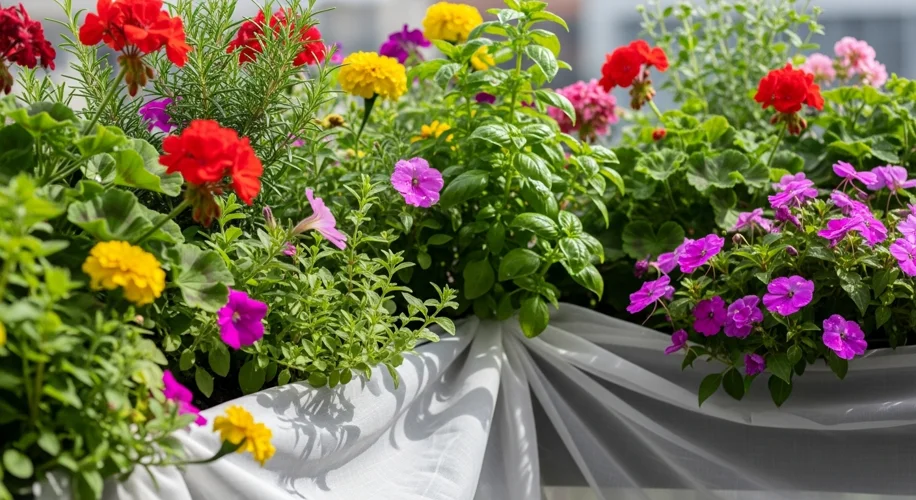Every summer, I visit my brother Elias, and every year, I’m amazed by his balcony. It’s not just pretty; it’s bursting with life, a small jungle even in the city heat. This year, I finally asked him what his secret was.
His answer was surprisingly simple, a technique he’s been using for years that makes a huge difference for his plants, especially those on his sunny, exposed balcony. It’s all about how he manages watering and midday sun exposure.
The Midday Shade Trick
Most of us know that plants need sun, but sometimes, the sun can be too much, especially for potted plants on a balcony that absorbs heat. Elias explained that during the hottest part of the day, typically between noon and 3 PM, he uses lightweight, sheer fabric – like old bedsheets or specific shade cloths – to create a temporary canopy over his most sensitive plants. This isn’t about blocking sun entirely, but rather diffusing the intense midday rays.
Why does this help? Intense, direct sunlight during peak hours can scorch leaves and dry out potting soil much faster. By providing a bit of shade, he prevents this stress. It’s like giving his plants a brief siesta from the harshest rays, allowing them to recover and continue thriving.
Watering Wisely
This shading technique goes hand-in-hand with his watering strategy. Elias always waters his plants in the early morning or late evening. This allows the water to soak into the soil thoroughly without evaporating too quickly under the hot sun. When he waters in the morning, the soil stays moist longer into the day, especially with the added midday shade. If he waters in the evening, the plants have the entire night to absorb the moisture.
He avoids watering in the middle of the day for two main reasons. First, much of the water would evaporate before it could reach the roots. Second, water droplets on leaves, combined with intense sun, can act like tiny magnifying glasses, potentially causing leaf burn. So, morning or evening watering is key.
Putting it into Practice
What struck me most is how practical and accessible this is. You don’t need fancy equipment. An old white sheet, a few clothespins, and some stakes can create a simple shading structure. You can easily adjust it based on the weather or the specific needs of your plants. For example, his tomatoes and peppers, which love sun but can struggle with extreme heat, benefit the most from this afternoon shade.
He also mentioned that this method helps maintain more consistent soil moisture, which is crucial for preventing blossom end rot in fruiting plants like tomatoes and peppers. Consistent moisture means the plants can absorb calcium more effectively.
It’s a gentle, observant approach to gardening. By paying attention to the subtle signs of plant stress and understanding the impact of our local climate, we can adapt our practices. Elias’s balcony is a testament to that – a vibrant, productive space achieved with thoughtful, simple techniques. I’m definitely going to try this on my own patio this summer. It’s a small change that makes a world of difference for happy, healthy plants.

